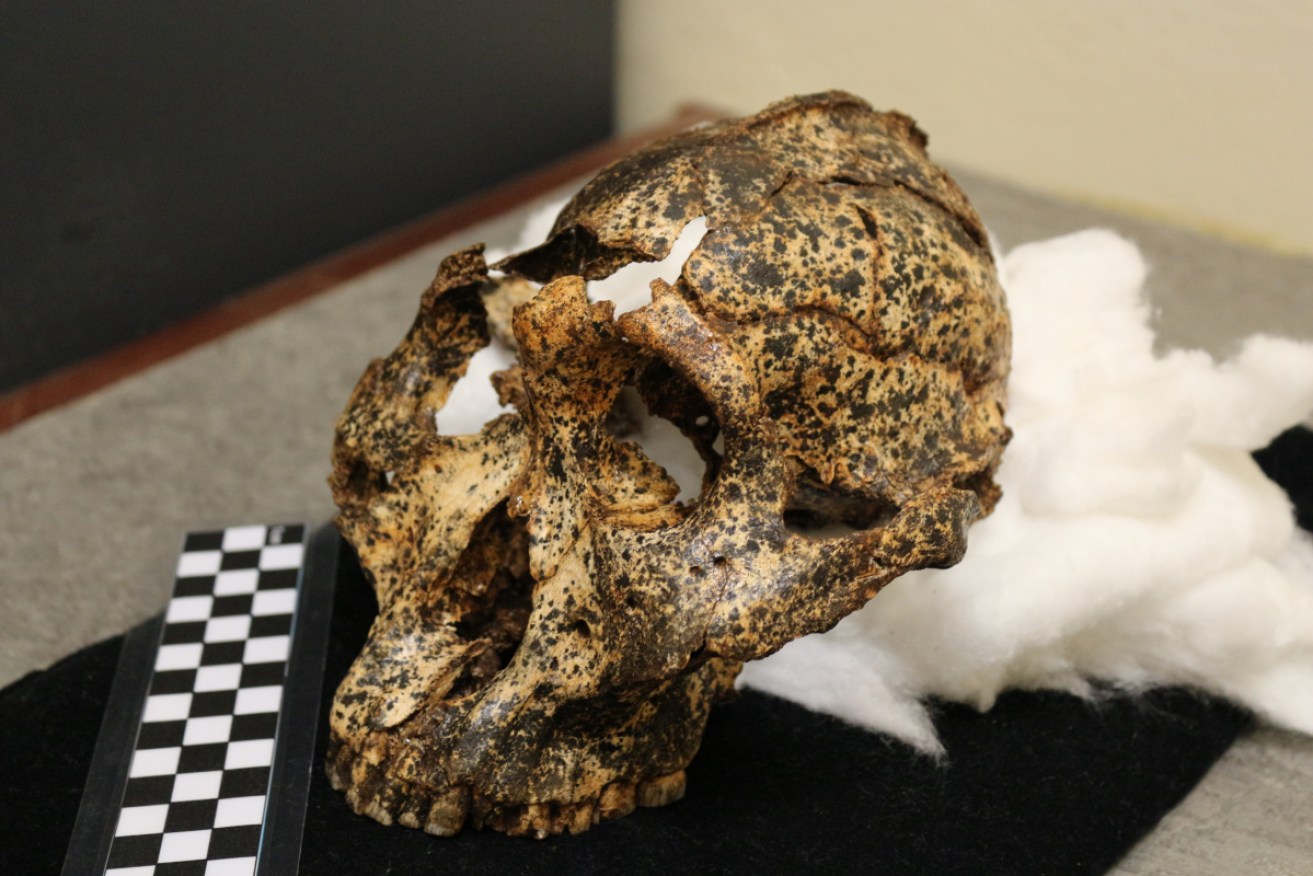Skull discovery reveals more about who modern humans evolved with


The skull is from a human species that existed millions of years ago. Photo: La Trobe University
The Australian discovery of a two-million-year old skull inside a cave that possibly housed the animal-ravaged bodies of our human ancestors has revealed how the changing climate determined who from our lineage survived.
The skull was buried in an ancient cave near the South African city of Johannesburg and recovered by a team of researchers from La Trobe University.
It had belonged to one of the earliest humans called Paranthropus robustus, a population that far outnumbered our direct ancestors called Homo erectus.
In fact, for every one Homo erectus, there were 10 Paranthropus robustus.
But their lineage went extinct and Homo erectus survived to give birth to modern humans – us.
So why did we survive, and they didn’t?
It had much to do with the climate some two million years ago when both Paranthropus robustus and Homo erectus first appeared.

It took about seven weeks for paleoanthropologists to dig the skull out of the ground and reconstruct it. Photo: La Trobe University
“It was going from drier to wetter to drier to wetter in relatively short periods of time,” study co-lead author Jesse Martin told The New Daily.
“What that does to creatures living on the landscape is it really shortens the amount of time that a creature has to adapt to what the new environment is before it shifts again.”
That likely put immense pressure on Paranthropus robustus and Homo erectus to move to a different food source every time the climate went dry, then shifted back to being wet.
Although Paranthropus robustus survived alongside our ancestors for about one million years, eventually it became extinct and Homo erectus kept evolving into Homo sapiens which, scientifically speaking, is the species that humans belong to.

Dr Angeline Leece and researcher Jesse Martin were among more than two dozen others who participated in the recovery and analysis of the fossil. Photo: La Trobe University
So what went wrong for Paranthropus robustus?
It had massive teeth that were accustomed to eating things like grass, bark and anything that was rock hard.
The problem with that was when the climate changed to become wetter, those food sources disappeared and Paranthropus robustus had to find something else to chew on.
That was particularly difficult because it had a much smaller brain compared to Homo erectus.
Over time, the teeth of Paranthropus robustus got bigger while Homo erectus was likely becoming smarter and more mobile, enabling it to better locate meat sources.
Mr Martin said Paranthropus robustus “did very, very well as a species” but it probably “lost out” because of its reliance on hard foods.
The new skull from the Drimolen Main Quarry site in Johannesburg had a few more secrets to reveal about how that species lived.
The last time a skull of this kind was recovered from Drimolen was in 1994.
It was argued to be a female Paranthropus robustus because it had similar but smaller characteristics to a majority male population that lived four kilometres away in Swartkrans.

The skull gives a rare insight into the microevolution of Paranthropus robustus. Photo: La Trobe University
The presumed female at Drimolen had a much smaller skull and set of teeth compared to the males at Swartkrans, where the fallen, eaten and deceased bodies of our human ancestors were buried.
“The differences between males and females of Paranthropus robustus were most similar to the differences between male and female gorillas, leading researchers to conclude that they must have been living in a similar way,” Mr Martin said.
For instance, it was thought that a single male Paranthropus robustus lived with multiple females, similar to how gorillas lived.
The latest discovery of a male skull by paleoanthropologists from La Trobe University has put that theory to bed.
The male from Drimolen had features that were most similar to the female from Drimolen, disproving the long-held belief that Paranthropus robustus were most like gorillas.
“The Drimolen fossils represent an early population that didn’t yet have large chewing muscles like Swartkrans,” Mr Martin said.
And what Mr Martin and the team found was that “there are different parts of the anatomy of the skull preserved in this fossil that are not preserved in any other fossil.
“It’s absolutely beautifully preserved,” he said.
The findings were published on Tuesday in Nature Ecology & Evolution.








